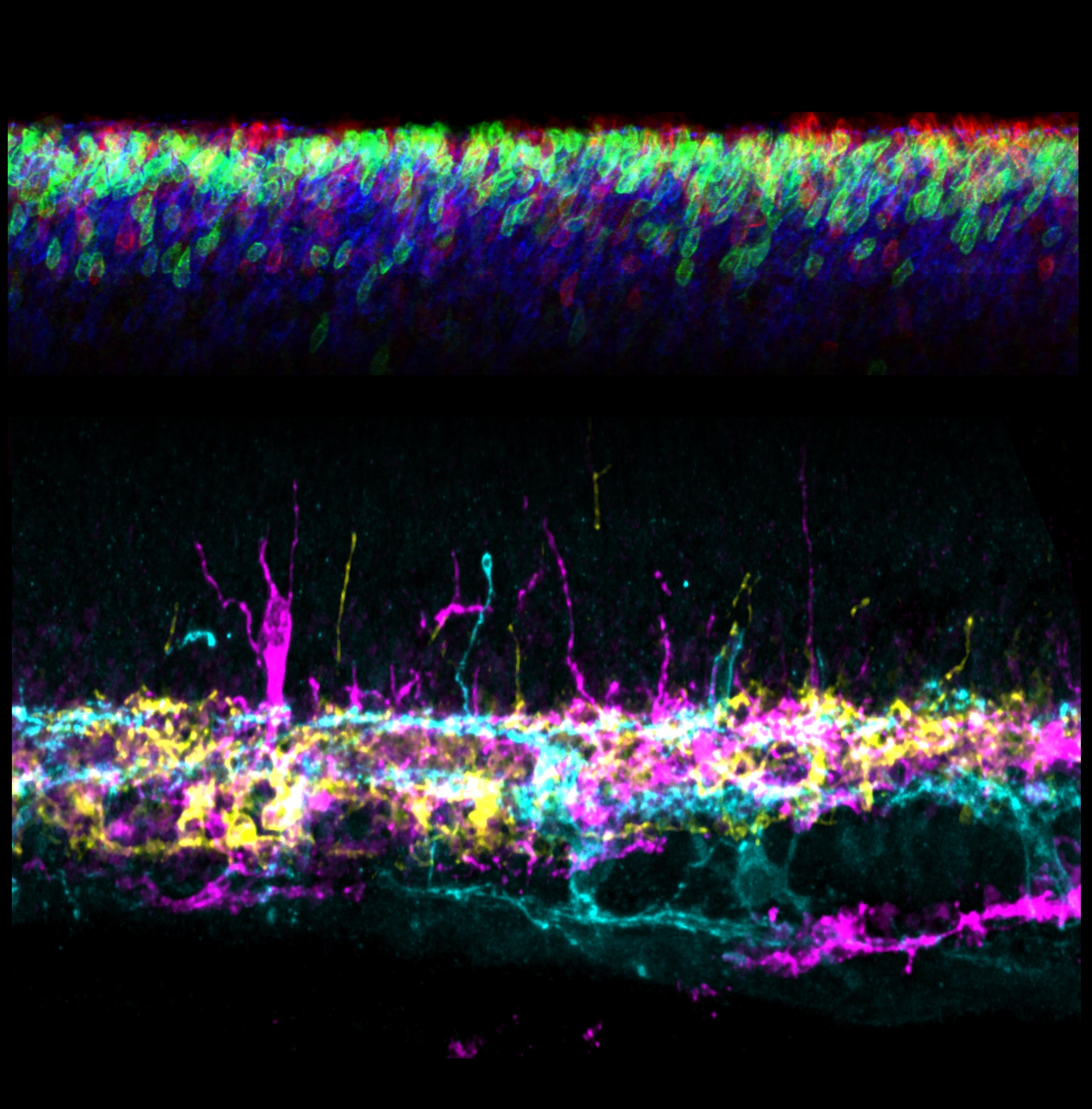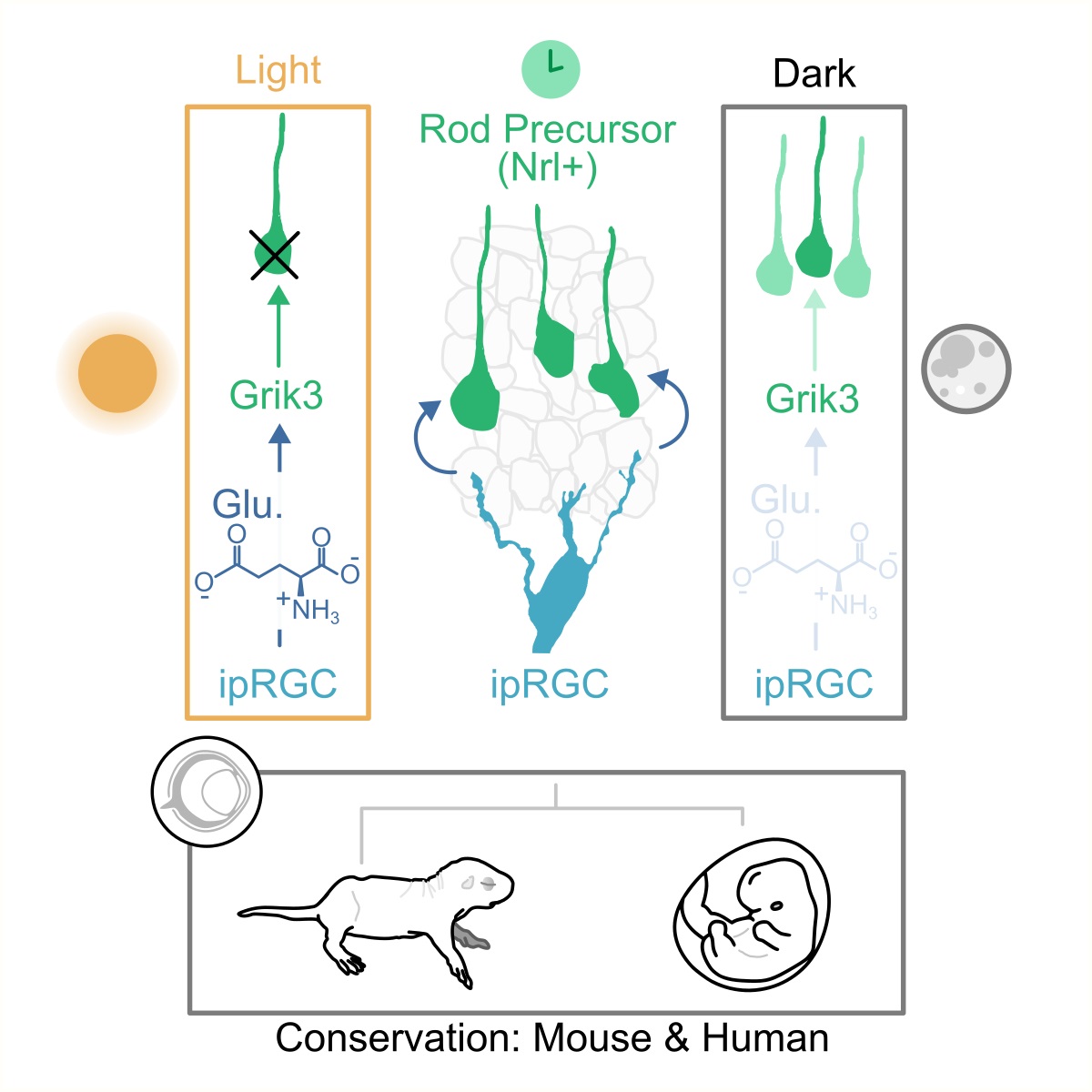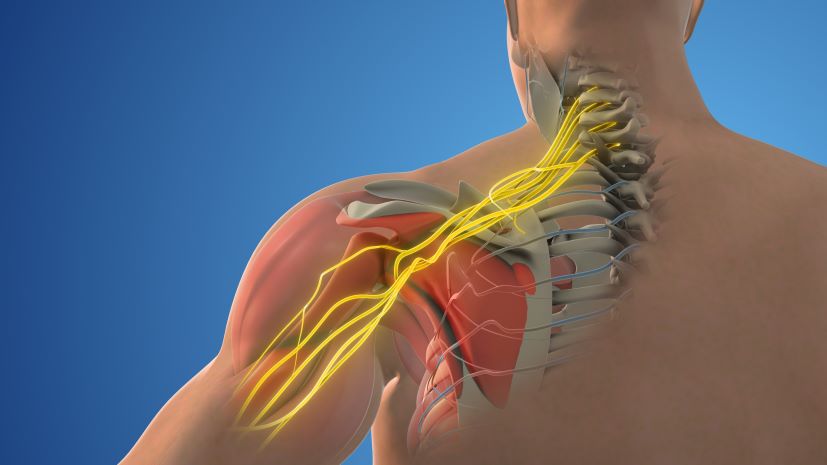Improved Light Control Might Help Prevent Eye Problems in Premature Infants
Research By: Shane D’Souza, PhD | Richard Lang, PhD
Post Date: August 14, 2024 | Publish Date: Aug. 13, 2024

Study in mice, led by experts at Cincinnati Children’s, shows that lighting conditions can change how newborn eyes develop
Researchers and clinicians have known for years that people born very prematurely often develop eyesight problems later in life.
Many of these problems have been linked to a condition called retinopathy of prematurity, in which vision is damaged by excess blood vessel growth within the eye. Now a study—in mice—from the Science of Light Center at Cincinnati Children’s reports that preterm birth also can affect eye development through changes in the eye’s supply of photoreceptor cells called rods.
Findings were published online Aug. 13, 2024, in Developmental Cell.
“Our work highlights that the lighting environment is crucial for rod abundance in early postnatal mouse development,” says the study’s lead author Shane D’Souza, PhD. “If they develop entirely in the dark, their eyes wind up with more rods than if they develop in a normal day/night light cycle.”
Rods are tall, cylindrically shaped photoreceptor cells in the retina that help the eye see in low light and at night. Rods are 500 to 1,000 times more sensitive to light than cones, the eye’s other major form of light-sensing cell.
For years, scientists believed that differences in cone-rod light sensitivity most likely reflected “hard-wired” genetic variations among individuals. However, this study shows that external lighting conditions play a direct and large role in driving how many rods form as the eye matures. This finding has potentially significant implications for how newborns are cared for in neonatal intensive care units and for future studies involving mice.
“Many intensive care units have lighting standards that vary according to infant age. They can range from no lighting at all, to extremely dim (1 lux), to bright (600 lux),” D’Souza says. “Meanwhile, when a premature infant needs a procedure, they can be exposed to very bright lights that are needed for the caregivers to see. These changes in lighting conditions could affect how many rods the eye develops and this could have long term effects on vision.”

Richard Lang, PhD, director of the Science of Light Center and senior author on the new study, has devoted decades to studying the surprising ways light affects body development and homeostasis. In 2021, based on his team’s research, Cincinnati Children’s installed a programmable full-spectrum lighting system in its upgraded NICU area and developed portable units that can change lighting in other select locations. The novel system can allow indoor spaces to mimic natural cycles of outdoor sunlight, including seasonal and daily patterns. Specific wavelengths of light also can be adjusted to explore potential light therapy applications.
“Moving forward, we are looking at ways to prevent rod death in our mouse models by using spectrally tuned lighting,” D’Souza says. “If we can implement lighting as an intervention strategy, we could use the lighting systems in our own NICU to potentially reduce the impact on the retinas of premature infants while also providing effective lighting for our clinical teams.”
Meanwhile, the new findings suggest that future studies assessing eye development will need to be executed with standardized lighting that satisfies the needs of the rod development pathway.
“This study adds a new dimension to our ever-growing understanding of how the murine eye develops, even prior to the eyelids opening,” D’Souza says. “There is immense variation in lighting across institutions and even within institutions, or even within a single rack of cages. Lighting intensity can vary 100-fold between the bottom and the top of a rack. This variability can impact studies of the visual system, so it may be important to begin implementing environmental lighting standards for mouse rooms or cages.”
About the study
In addition to D’Souza and Lang, Cincinnati Children’s co-authors on this study included Brian Upton, MD, PhD, Gowri Nayak, PhD, Kassidy Grover, Minh-Thanh Nguyen, PhD, and Yueh-Chiang Hu, PhD. Experts from the University of Washington, George Washington University, and the University of Alabama at Birmingham also contributed.
Funding sources for this work included grants from the National Institutes of Health (R01s EY032029, EY032752, EY032566, EY034456, GM15264, R01 EY025555, T32NS007453, R24HD000836, and P30EY003039), the Goldman Chair of the Abrahamson Pediatric Eye Institute at Cincinnati Children’s, the Damon Runyon Cancer Research Foundation, the Albert J. Ryan Fellowship, and the Hanna H. Gray Fellows Program.
Read more
Spectral Lighting: Novel Science Leads to Innovative NICU Design
| Original title: | Developmental control of rod number via a light-dependent retrograde pathway from intrinsically photosensitive retinal ganglion cells |
| Published in: | Developmental Cell |
| Publish date: | Aug. 13, 2024 |
Research By









